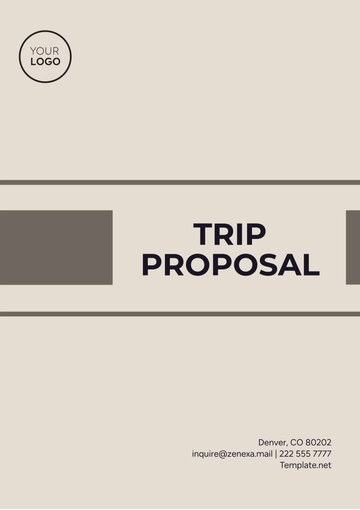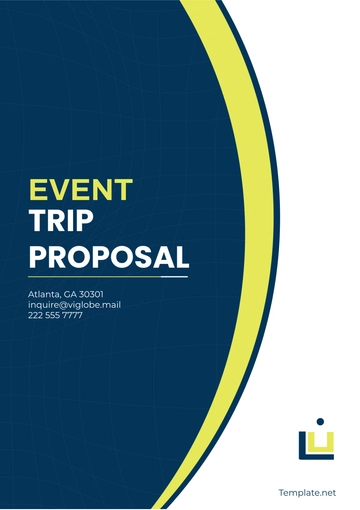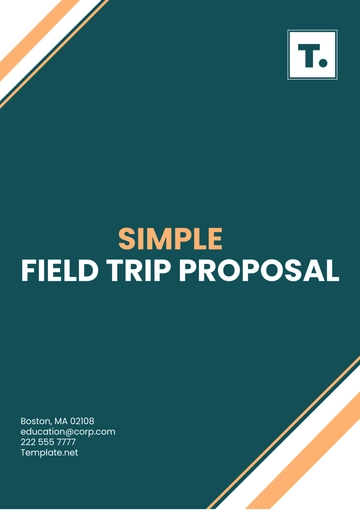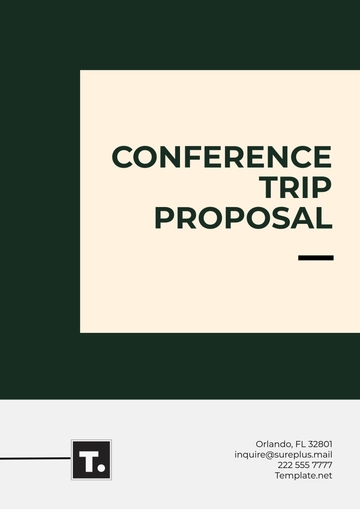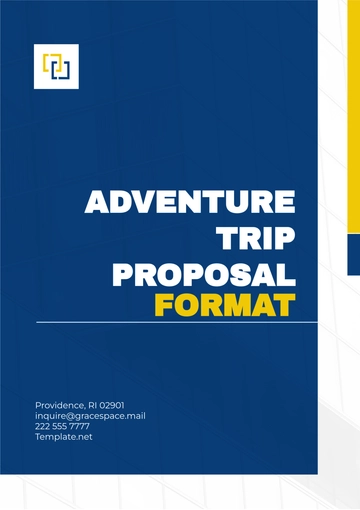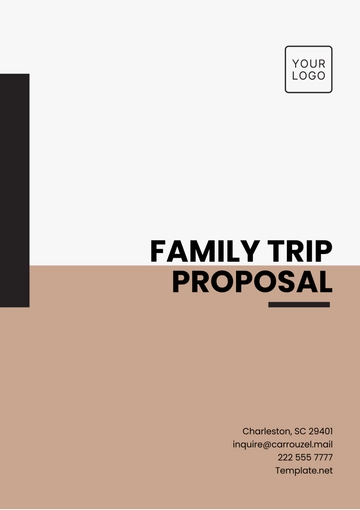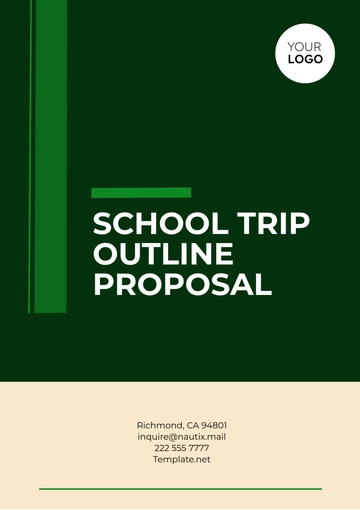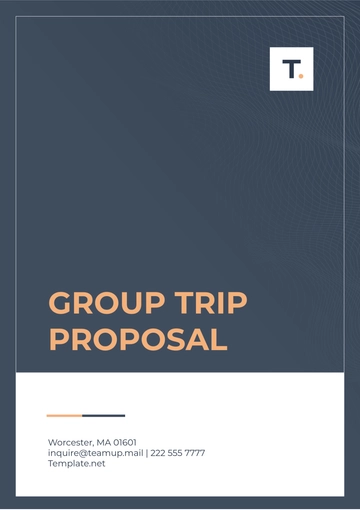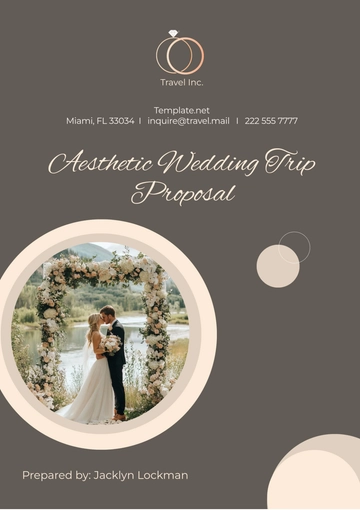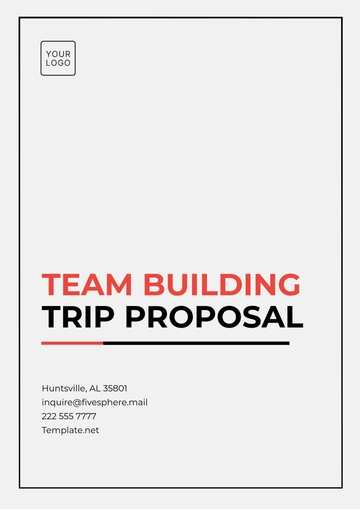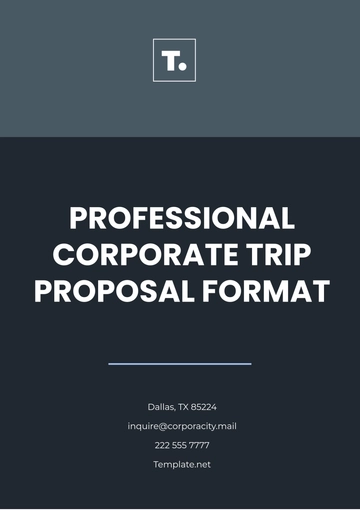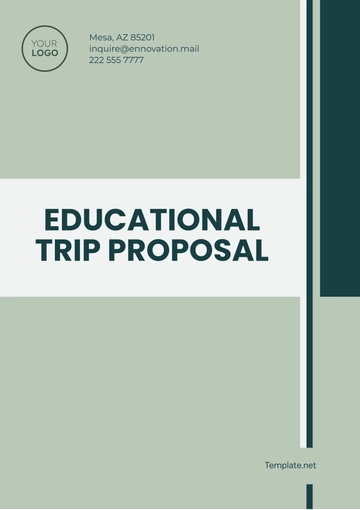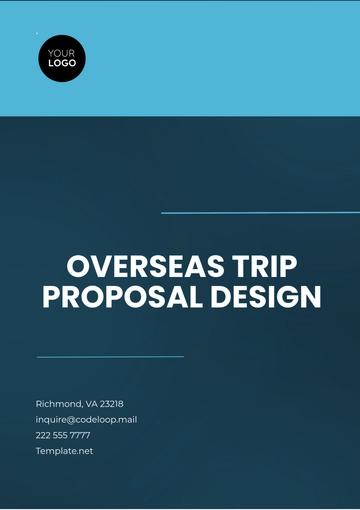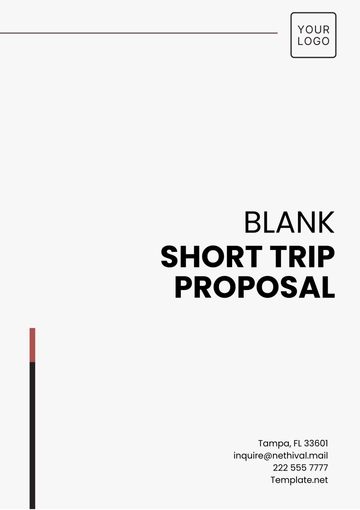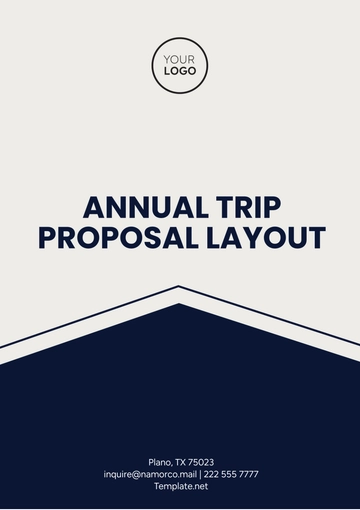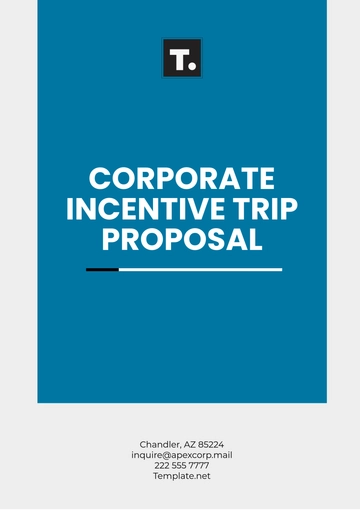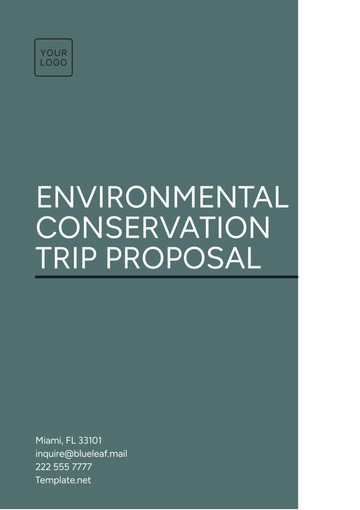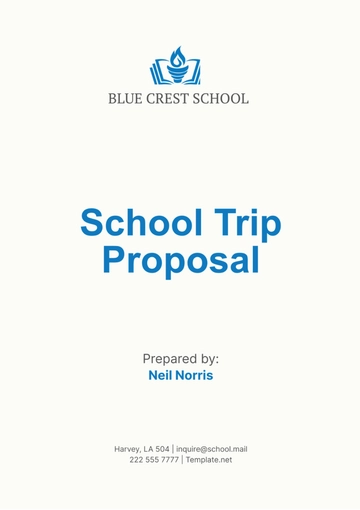Free Annual Trip Proposal Layout
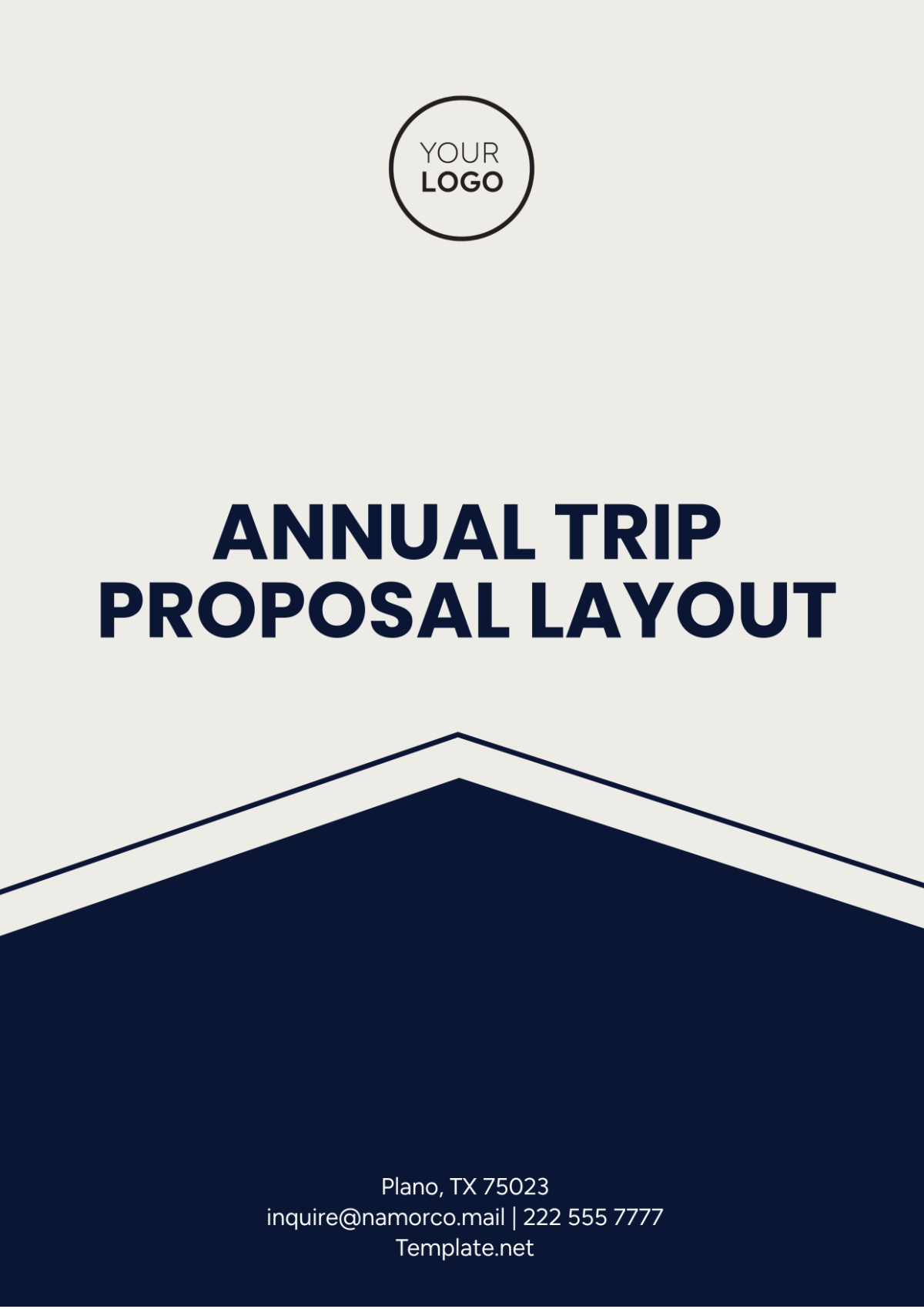
Introduction
This section provides an overview of the proposed annual trip, including the purpose, objectives, and expected benefits. It sets the stage for the proposal by explaining the trip's significance to the organization or group.
Trip Overview
Destination
Description of the destination(s), including key attractions, culture, and relevance to the trip’s goals.
Dates
Proposed dates for the trip, including departure and return times, along with a brief explanation of the timing considerations.
Duration
The total length of the trip, with key milestones or scheduled activities (e.g., travel days, excursions, meetings, etc.).
Objectives
Primary Goals: Outline the main objectives of the trip, such as team building, cultural exploration, education, or business development.
Secondary Goals: Other supportive objectives that align with the primary goals.
Target Audience
Description of the group or participants attending the trip (e.g., employees, leadership team, volunteers).
Any specific criteria for participants (e.g., departments, job roles).
Itinerary
Day-by-Day Schedule
Provide a detailed itinerary for the entire trip, including:
Day 1: Arrival, welcome dinner, and introductory meeting.
Day 2: Key activities (e.g., site visits, workshops, leisure time).
Day 3: Continue with the schedule (e.g., cultural immersion activities, group discussions).
Day 4: Optional activities, concluding remarks, and departure.
(Include specific activities, meetings, and leisure time.)
Budget
Estimated Costs: Breakdown of trip expenses, such as travel, accommodation, meals, and activity fees.
Total Estimated Cost: Final calculation of the trip’s total projected costs.
Payment Structure: Any payment deadlines or required deposits.
Logistics and Accommodation
Travel Arrangements: Modes of transportation (e.g., flights, buses, trains), and travel insurance information.
Accommodations: Hotel or lodging details (e.g., location, amenities, pricing).
Meals and Dining: Planned meal arrangements, including any dietary considerations or special requests.
Risk Assessment
Safety Measures: Plans for ensuring the safety and security of all participants.
Health Considerations: Required vaccinations, insurance, or travel advisories.
Contingency Plan: Steps to be taken in case of unexpected events or emergencies.
Benefits of the Trip
Team Building: How the trip fosters collaboration, morale, and relationships.
Cultural Exposure: Opportunities for learning and growth through new cultural experiences.
Knowledge Sharing: Potential workshops, presentations, or seminars that contribute to professional development.
Conclusion
A brief summary of why the trip is important and why it aligns with the goals of the organization or group. A call to action, inviting approval or feedback on the proposal.
Contact Information
Organizer Name: [Your Name]
Email: [Your Email]
- 100% Customizable, free editor
- Access 1 Million+ Templates, photo’s & graphics
- Download or share as a template
- Click and replace photos, graphics, text, backgrounds
- Resize, crop, AI write & more
- Access advanced editor
Organize your yearly travel plans with Template.net's Annual Trip Proposal Layout Template. This fully editable and customizable template streamlines the proposal process, making it easy to outline all necessary details. Editable in our AI Editor Tool, it empowers you to personalize each aspect, ensuring a professional and engaging presentation that captures your audience's attention.
You may also like
- Business Proposal
- Research Proposal
- Proposal Request
- Project Proposal
- Grant Proposal
- Photography Proposal
- Job Proposal
- Budget Proposal
- Marketing Proposal
- Branding Proposal
- Advertising Proposal
- Sales Proposal
- Startup Proposal
- Event Proposal
- Creative Proposal
- Restaurant Proposal
- Blank Proposal
- One Page Proposal
- Proposal Report
- IT Proposal
- Non Profit Proposal
- Training Proposal
- Construction Proposal
- School Proposal
- Cleaning Proposal
- Contract Proposal
- HR Proposal
- Travel Agency Proposal
- Small Business Proposal
- Investment Proposal
- Bid Proposal
- Retail Business Proposal
- Sponsorship Proposal
- Academic Proposal
- Partnership Proposal
- Work Proposal
- Agency Proposal
- University Proposal
- Accounting Proposal
- Real Estate Proposal
- Hotel Proposal
- Product Proposal
- Advertising Agency Proposal
- Development Proposal
- Loan Proposal
- Website Proposal
- Nursing Home Proposal
- Financial Proposal
- Salon Proposal
- Freelancer Proposal
- Funding Proposal
- Work from Home Proposal
- Company Proposal
- Consulting Proposal
- Educational Proposal
- Construction Bid Proposal
- Interior Design Proposal
- New Product Proposal
- Sports Proposal
- Corporate Proposal
- Food Proposal
- Property Proposal
- Maintenance Proposal
- Purchase Proposal
- Rental Proposal
- Recruitment Proposal
- Social Media Proposal
- Travel Proposal
- Trip Proposal
- Software Proposal
- Conference Proposal
- Graphic Design Proposal
- Law Firm Proposal
- Medical Proposal
- Music Proposal
- Pricing Proposal
- SEO Proposal
- Strategy Proposal
- Technical Proposal
- Coaching Proposal
- Ecommerce Proposal
- Fundraising Proposal
- Landscaping Proposal
- Charity Proposal
- Contractor Proposal
- Exhibition Proposal
- Art Proposal
- Mobile Proposal
- Equipment Proposal
- Student Proposal
- Engineering Proposal
- Business Proposal
